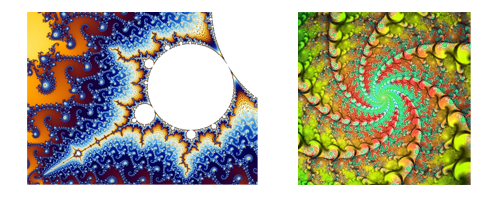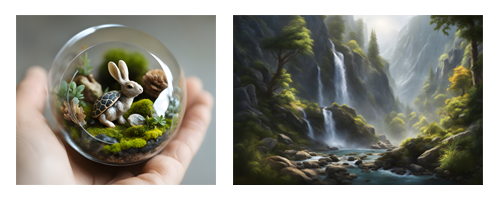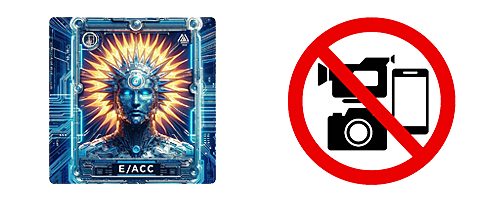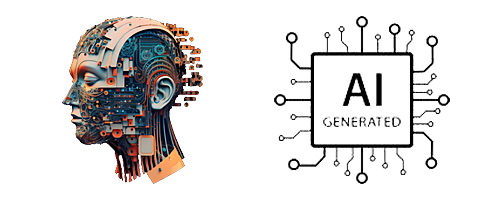Non-Photographic (Generative) Digital 3D Images


This section is focussed on Digital 3D Images that are computer generated and not created by light capture.
Because of their method of creation, these images are considered public domain, that is, they have no owner. Submitting Non-Photographic (Generative) Digital 3D Images to a PSA Sponsored Real Digital Stereoscopic Photography Exhibition is not allowed and they are not eligible for PSA awards or recognition.
Generative imagery represents a category of digital imagery that involves the use of algorithms and code to create images. The generation process incorporates randomization, procedural rules, or data inputs, leading to an infinite array of possibilities and variations. These images are typically generated using autonomous system that requires some form of input to start the process. An autonomous system in this context is generally one that is non-human and can independently determine features of an image that would otherwise require decisions made directly by a human creator. In some cases, the human creator may claim that the generative system represents their own ideas, and in others that the system takes on the role of the creator.


Types of Non-Photographic (Generative) Digital 3D Images
Algorithmic art, also known as computer-generated art, is a subset of generative art (generated by an autonomous system) and is related to systems art (influenced by systems theory). Fractal art is an example of algorithmic art.
Fractal art is a form of algorithmic art created by calculating fractal objects and representing the calculation results as still digital images, animations, and media. Fractal art developed from the mid-1980s onwards. It is a genre of computer and digital art which in combination produce a type of abstract art. It is usually created indirectly with the assistance of fractal-generating software, iterating through three phases: setting parameters of appropriate fractal software; executing the possibly lengthy calculation; and evaluating the product. In some cases, other graphics programs are used to further modify the images produced. This is called post-processing. The Julia set and Mandelbrot sets are considered as icons of fractal art.
Generative AI is a subset of artificial intelligence that focuses on creating images that mimic human creativity and produce original content, often using large datasets and machine learning.
Text-to-image AI generators produce images based on text prompts. Input a description, wait briefly (often under a minute), and view the resulting image. You can download it or generate more images using the initial result. Enter the description, click Generate, and quickly obtain an image.
Conversion to 3D. Most of these images are created in 2D format and 2D to 3D Depth-Based Conversion is required to create an effective stereogram. Most semiautomatic methods of stereo conversion use artificial intelligence (ai) derived depth maps and depth-image-based rendering.
Depth-based conversion uses a separate auxiliary picture known as the "depth map" that indicate depths of objects present in the scene. The depth map is a separate grayscale ai derived image having the same dimensions as the original 2D image, with various shades of grey to indicate the depth of every part of the frame. While depth mapping can produce a fairly potent illusion of 3D, it inherently does not support semi-transparent objects or areas, nor can it represent occluded surfaces.
- Viewer Quick Reference (click/tap to show)
| Menu | Dropdown | Key | Function |
|---|---|---|---|
| Full | Enter | Full-Screen mode (if supported by your browser) | |
| Size | |||
| Fit | F | Fit to Screen size | |
| - | - | Zoom out | |
| + | + | Zoom in | |
| Stereo | S | Dropdown menu for the stereo viewing method |
|
| SBS | Side by side (Computer monitor, Tablet, Large Print or Smart Phone 3D and VR Viewers) | ||
| LR/RL | Stacked SBS for Parallel/Cross view (free-viewing) | ||
| Colour | Colour Anaglyph (Red-Cyan glasses required) | ||
| H_Int. | Column Interlaced (Passive 3D monitor and Circular Polarised glasses required) | ||
| 2D | Single Image View | ||
| <- | Back space | Previous Image | |
| -> | Space Bar | Next Image | |
| M | Show/Hide menu buttons |

Click or tap on any photograph showing this icon to launch the HTML5 Stereo Viewer
Examples of Non-Photographic (Generative) Digital 3D Images














